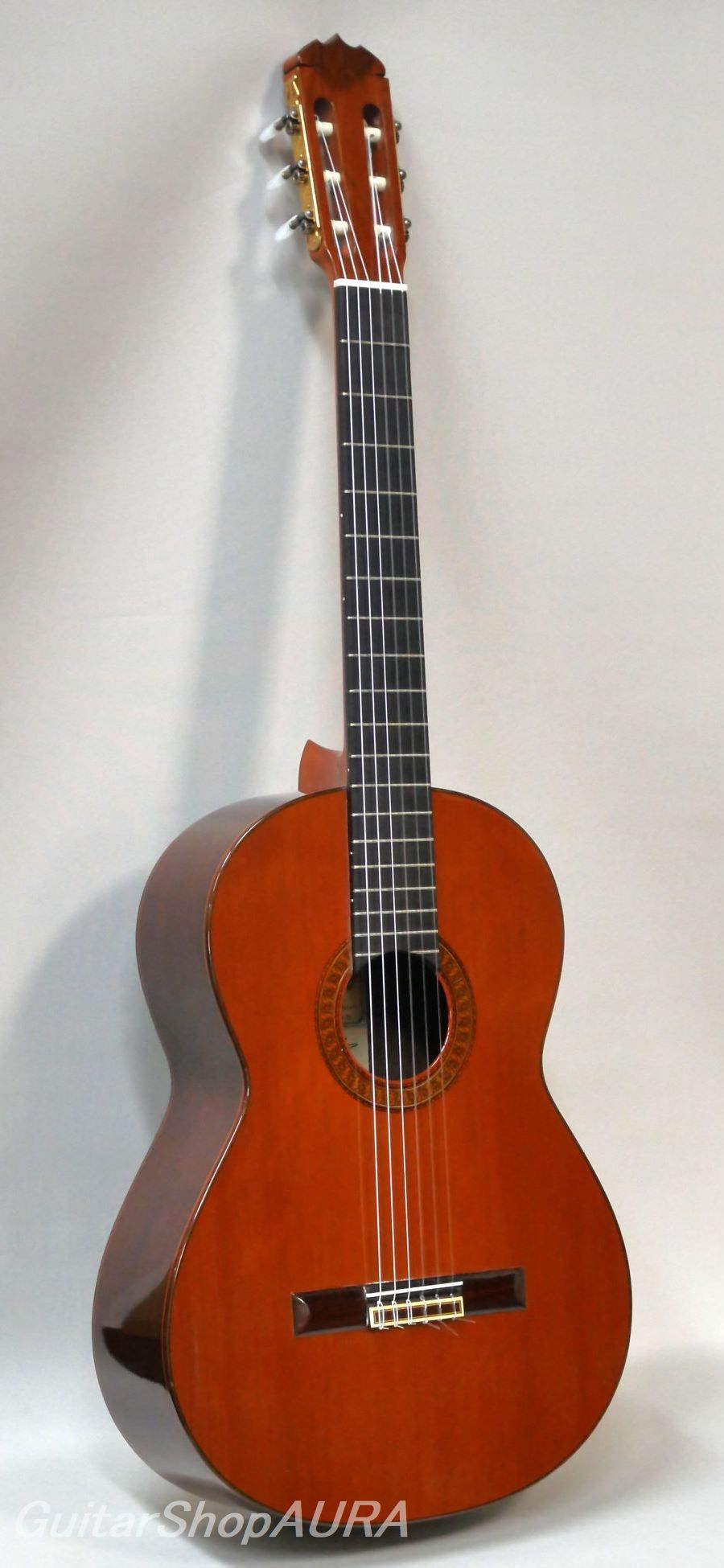
| Instrument | Jose Ramirez III |
| Category | Imported Classical Guitars 〔Vintage〕 |
| Number/Model | 1a No.8913 |
| Scale length | 664mm |
| Country | Spain |
| Year | 1975year |
| Top | Solid Ceder |
| Side&Back | Solid Indian Rosewood |
| Condition※ | 8 |
| List price | INQUIRE |
| Price (tax included) | Please Inquire |
| option | with Hardcase |
Click to enlarge the photos below
Neck: Cedro
Fingerboard: Ebony
Finish (Top): Polyurethane
Finish (Back & Sides): Polyurethane
Tuning Machines: Fustero
String Height (1st): 2.8mm
String Height (6th): 4.6mm
[Profile]
José Ramírez is one of Spain’s most prestigious workshops and arguably the most famous guitar brand in the world. Since the time of José Ramírez I (1858–1923), the Ramírez name has shaped the very history of Spanish guitar making for more than a century. Among its many eras, the period of José Ramírez III (1922–1995) is often regarded as a golden age. Guitars from this time combined innovation with widespread popularity, captivating guitarists worldwide.
José Ramírez III introduced several groundbreaking innovations: the use of cedar for the soundboard, deeper body construction, a double-sided structure with cypress lining on the inside of the sides, extended string length (664 mm compared to the standard 650 mm), and a change from traditional French polish to synthetic finishes. These developments had a profound impact on the future of classical guitar making. At the same time, the trademark “Ramírez tone”—sweet, lustrous, and deeply romantic—became so influential that it helped define the modern image of the classical guitar.
[Description]
This is a 1975 José Ramírez III “1a” concert model in Indian rosewood. First introduced in 1964, the “1a” retained its original specifications until about 1986, when the scale length was reduced from 664 mm to 650 mm and the body and neck dimensions were adjusted accordingly. Throughout this period, the model gained immense worldwide popularity.
During the 1970s, however, subtle structural changes were introduced. In particular, the neck set angle became deeper, and the fingerboard was given a pronounced slope from the bass to the treble side. This created a distinctive playability, where string height decreases noticeably from the 6th to the 1st string. The result was greater projection, depth, and power—qualities that came to define the modern concert guitar.
This 1975 example embodies those very characteristics, offering striking volume, power, and expressive range even today. Internally, it follows the typical “1a” bracing pattern: one harmonic bar above and one below the soundhole, the lower bar intersected diagonally by a long transverse bar spanning the widest points of the upper and lower bouts; six fan braces arranged almost parallel (two on the treble side, three on the bass side); two closing bars at the lower bout; and a small bridge plate beneath the saddle. The resonance is set just below G♯.
While some Ramírez guitars from this era feature string heights as high as 5 mm at the 12th fret on the 6th string, this instrument has had its bridge and saddle adjusted, resulting in lower, more comfortable action than originally standard. The top shows two repaired cracks and several minor touch-ups for dents and scratches, along with typical playing wear and surface marks. The neck remains in good condition; the frets show moderate wear but do not affect playability. The original Fustero tuning machines are intact and function smoothly.
Inside the body is the stamp “6,” identifying the maker as Arturo Sanzano Moreno.